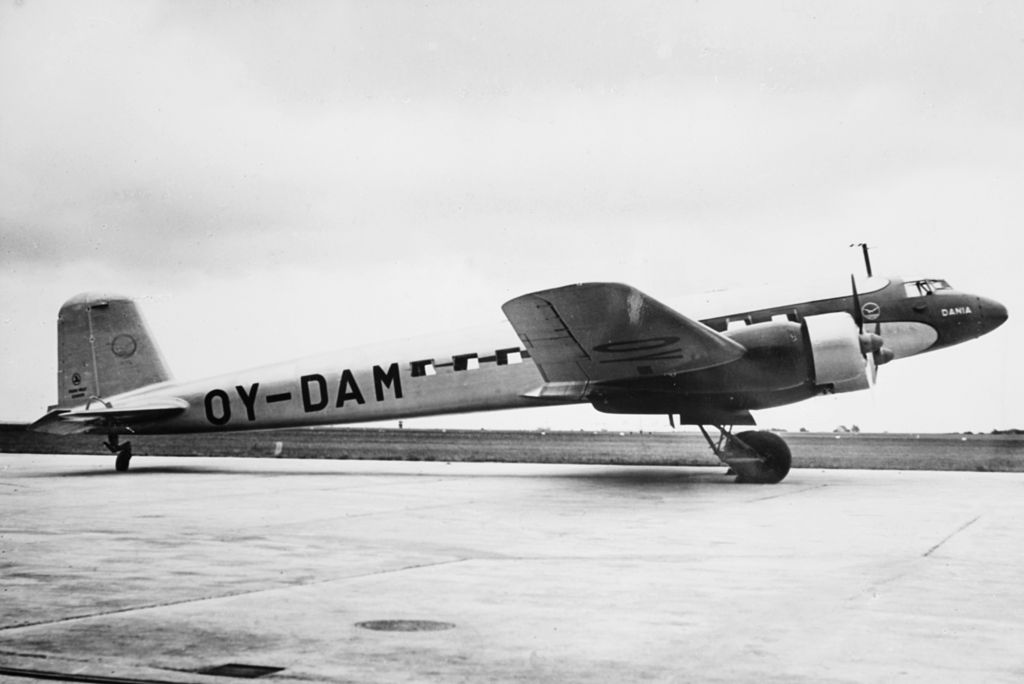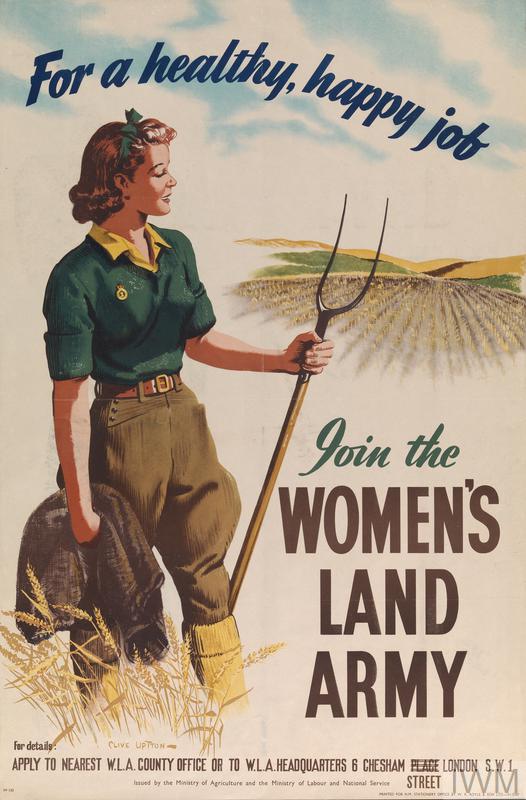Doris Augusta Marie Jensen
(1907 - )
Profile
Doris Jensen became the first Danish stewardess, when she joined Danish Air Lines in July 1938. She was onboard the last flight to London in April 1940. Unable to return before after the war, she served in the Women’s Land Army.
Doris Augusta Marie Jensen was born on 19 September 1907 in Randers, the daughter of Peter Frederik Jensen and Maria Vilhelmine Jensen (née Knuthsen).[1] The family moved from Randers to Hobro in 1908 and to Hjørring in 1912, where her father was employed as lecturer at the Hjørring højere Almenskole.[2]
Jensen attended the same school as a pupil and graduated from lower secondary school (realeksamen) in 1923. She was trained as a nurse at Rigshospitalet in Copenhagen and took courses in English and German at N. Zahle’s school. Following a stay at the Danish Consul-General in the Canary Islands, H. P. Olsen, she worked for two years as housekeeper at the Bellevue Strandhotel, a hotel north of Copenhagen.[3]
Denmark's first stewardess
In 1938, Danish Air Lines (Det Danske Luftfartsselskab) expanded their fleet of aircraft acquiring two Focke Wulf Fw 200 Condor air liners. This beautiful aircraft was the the fastest and most modern air liners of the time. The first of the type delivered in June 1938.[4]

The first Condor was baptised OY-DAM Dania by Princess Margaretha at a ceremony in Kastrup airport on 28 July 1938. Among the guests were Prince Axel and the Prime Minister Thorvald Stauning.[5] Dania entered into service on the Copenhagen-Hamburg-London route on the same day. The passengers on the inaugural flight were specially invited and the six-days round-trip included a cocktail party at the Dorchester Hotel and a gala dinner.
Jensen was stewardess on-board the aircraft. She had joined Danish Air Lines four weeks earlier as the first Danish stewardess ever. She—and her colleague Hanne Hansen, who joined the company a few months later—were chosen among more than 300 applicants. Jensen met the high standard the company had called for: she was unmarried, able to speak three languages, and able to serve in the air without becoming airsick. As if she was the hostess at a dinner party she had to be able converse the passengers and sea to their every need.[6]
Exiled
The two stewardesses covered all flight on the two Condor liners Dania and Jutlandia (OY-DEM). Jensen and the rest of the crew landed in Croydon on 2 September 1939 and spent the night there as usual before the planned return flight the next day. They were woken at 0100 hrs and told to go to the airport at once. In the meantime, the Corydon airport had been taken over by the military authorities, who ordered them to return to Copenhagen. The war was declared on the 3rd. All the airlines’ aircraft and personnel were grounded for the next couple of months.
On 8 April 1939, Dania operated the regular route arriving in London (now Shoreham). Originally, Emil Damm had been the scheduled pilot, but his colleague Harald Julius Hansen had filled his place in the roster, so Damm could celebrate his birthday with his family. Over the Danish waters, the crew observed a large number of ships going north, to Norway as it turned out. They arrived and spent the night at their hotel in Worthing. At breakfast the next morning, they were met by the company’s London based mechanic, later RAF-pilot Henning Pedersen, who told them, that German troops had crossed the Danish borders.
The crew of four, Harald Hansen, mechanic Jørgen Dalbro, wireless operator Uffe Jensen and air hostess Doris Jensen, was stuck. This was also the case Henning Pedersen and head of the London office Vagn Christensen.

Women' Land Army
The crew remained in Worthing for two weeks, but moved to Bristol. Here they experienced heavy air raids, and most nights during fall and winter 1940 were spent in the air raid shelter. For the first year hey remained employed and paid by Danish Air Lines.
Jensen worked in the Danish Club in Knightsbridge for a couple of months, and later worked in a Danish engineering firm. She tried to volunteered for the Army, but was turned down.
In stead, she joined the Women’s Land Army on 31 January 1942.[7] Originally created during the First World War, the Women’s Land Army was a civilian organisation created by the Board of Agriculture to bring women into work in agriculture, replacing men in military service. The organisation was revived in June 1939.
Jensen was employed as an apprentice gartner at the Burcote Auxiliary Hospital in Abingdon outside Oxford. Her work contributed to providing vegetables to seventy wounded soldiers, twenty-eight nurses and two Land Girls in addition to herself. When the hospital’s cook had to leave the position due to health issues, she was able to provide contact to the Danish cook Maja Christiansen, who took the position.[8] Christiansen had been cook in the household of the Danish managing director Otto J. Bruun, before taking up this position.[9]
Jensen ended her employment with the Women’s Land Army on 5 February 1945.[10]
Jensen returned to Denmark in September 1945, arriving in Copenhagen/Kastrup airport on the Danish Air Lines flight from London on 5 September 1945.[11] She returned to Hjørring to live with her mother, who had recently been widowed, until March 1946. She returned to the air as Danish Chief Stewardess in the newly established Scandinavian Airlines System (SAS).[12]
Endnotes
[1] DNA: Parish register, Randers, Skt Mortens Sogn.
[2] Larsen and Mikkelsen (1934). Dansk Skole-Stat, Vol. IV, p. 324.
[3] Pedersen, P. S. (2005). Piger på højt plan, Caution : medlemsblad for Cabin Attendants Union.
[4] Det Danske Luftfartselskab har købt Europas hurtigste Trafikflyvemaskiner. FLYV, 11(3), p. 61-63.
[5] “DANIA”s Daab og Indvielse i Kastrup Lufthavn den 28. Juli 1938. FLYV, 11(8), p. 204.
[6] Vierhout and Rostock (2014). Vi var de første: stewardessen som danmarkshistorie.
[7] Ancestry: UK, World War II Women's Land Army Index Cards, 1939-1948.
[8] DNA: 10194, 0180-037/3, Det danske Råd i London, Arbejdsudvalgets indkomne sager (1942-1944).
[9] Ancestry: 1939 Register for England and Wales.
[10] Ancestry: UK, World War II Women's Land Army Index Cards, 1939-1948.
[11] Fra Lufthavnen, Berlingske Tidende, 6 September 1945.
[12] Pedersen, P. S. (2005). Piger på højt plan, Caution : medlemsblad for Cabin Attendants Union.